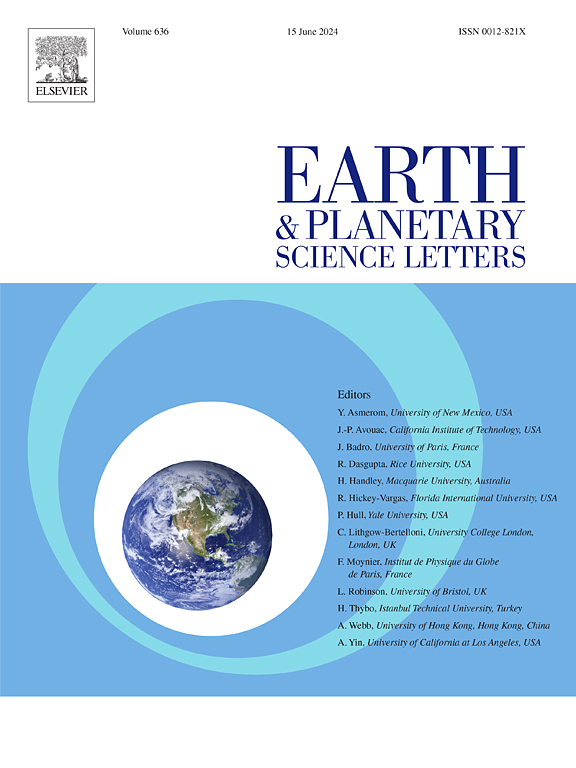The first Al-Cu-alloy-bearing unmelted micrometeorite suggests contributions from the disrupted ureilite protoplanet
IF 4.8
1区 地球科学
Q1 GEOCHEMISTRY & GEOPHYSICS
引用次数: 0
Abstract
We report the discovery of Al-Cu-alloys within a coarse-grained micrometeorite from the Congo. Oxygen isotope ratios of the sample are consistent with a CV3 source, similar to the Khatyrka meteorite. The petrology of the micrometeorite is also similar to Khatyrka and testifies to the disequilibrium impact mixing between the CV3 parent body and a differentiated body, which was the source of the Al-Cu-alloys. The oxygen isotope composition, however, suggests either limited mixing with projectile silicates or a differentiated projectile with oxygen isotopes close to the CCAM. The most plausible origin of the Al-Cu-alloys is the desilication of an aluminous igneous protolith by hydrothermal activity under highly reduced conditions. We argue that the ureilite parent body is the most likely source for the projectile owing to its silicic magmatism, late-stage reduction and similar oxygen isotope ratios. Al-Cu-alloys can, thus, be found on the disrupted remnants of such protoplanets.
求助全文
约1分钟内获得全文
求助全文
来源期刊

Earth and Planetary Science Letters
地学-地球化学与地球物理
CiteScore
10.30
自引率
5.70%
发文量
475
审稿时长
2.8 months
期刊介绍:
Earth and Planetary Science Letters (EPSL) is a leading journal for researchers across the entire Earth and planetary sciences community. It publishes concise, exciting, high-impact articles ("Letters") of broad interest. Its focus is on physical and chemical processes, the evolution and general properties of the Earth and planets - from their deep interiors to their atmospheres. EPSL also includes a Frontiers section, featuring invited high-profile synthesis articles by leading experts on timely topics to bring cutting-edge research to the wider community.
 求助内容:
求助内容: 应助结果提醒方式:
应助结果提醒方式:


